Nga Aho, a national network of Maori design professionals
Aotearoa (New Zealand)
2024 WINNER
The RAIC International Prize recipient is the Aotearoa-based Ngā Aho, a national organization of Maori design professionals who come together to support each other to better serve the design aspirations of Maori communities.
Ngā Aho formed in 2005, in response to the New Zealand Ministry for Environment’s release of an Urban Design Protocol that failed to meaningfully eNgāge with Māori aspirations and interests in the built environment. As a collaboration of Indigenous designers, its members aim to ensure culturally appropriate and critical approaches in complex spaces, and to understand and follow Mãori design strategies to deliver design outcomes that help deepen the sense of place and develop meaningful and durable relationships with iwi (Tribes).
As a Māori network that is largely, but not exclusively, involved in the built and physical environment, Ngā Aho has continuously championed Māori and Indigenous design and practitioners, and acts as a rallying point to connect Indigenous designers professionally, spiritually and culturally.
"Around the Pacific Rim, Ngā Aho have remained as leaders in the built environment of Indigenous Peoples,” writes RAIC Indigenous Task Force co-chair Sim’oogit Saa-Bax Dr. Patrick Stewart, FRAIC.” When we embarked on our journey to bring our nations together, we looked to Ngā Aho. Participating in each other’s design symposia for over fifteen years has strengthened our resolve to keep traditional knowledge central to our work within First Nations, Inuit and Métis communities in this country.”
"The Maori have provided profound global leadership for Indigenous communities for decades,” adds Indigenous architect and professor David T. Fortin, MRAIC. “Similarly, Ngā Aho is emblematic of the essential contributions by Indigenous peoples through their design innovation and resilience, and this continues to inspire architects and designers around the world. Ngā Aho represents the prioritization of collective voice and embedded values over personal egos and individual achievements, and through this they offer a very exciting path forward for our profession."
Below are some further reflections on the impact of Ngā Aho, provided by the organization.
The name Ngā Aho
Ngā Aho are the multiple threads which tie us to our ancestors, the new and ancient worlds. A governing body for all peoples to unify in good works for all, but mainly in the pursuit of design and architecture. These threads are that of the land, the ocean, the sky, that which forms the world. This is the background to the naming of this collective.
This initiative is deeply connected to spirit, consciousness, humanity and people of the land. Like a finely formed flax string or rope that binds humankind to all things. Including the ancestral ties to our great voyaging waka, our spiritual home Hawaiki, and our beloved ancestors.
On the Indigenous Sense-of-Place
While Indigenous peoples have ‘made place’ for thousands of years, settler-colonialism works to erase visible Indigenous identities and cultural representations, political relationalities and legal traditions from places and urban spaces. Indigenous placemaking has been generating conversation in recent years in urban public policy, governance and academic spheres.
Experience in Aotearoa illustrates the importance of networks and shared tools to ensure Indigenous practitioners can support each other and eNgāge critically with and shape opportunities in urban design and placemaking.
The centrality or primacy of ‘Place’ (an entity with a specific identity) is nothing new to Indigenous peoples, but stands out against the dominant system of research procedures, ethics, operations and norms, a system that is also called to support Indigenous research sovereignty and to ‘make room and move over’ (Latulippe and Klenk, 2020). It stands out against a relational turn in the humanities and social and sustainability sciences that tends not to give due effect to Indigenous thought leadership and histories (Watts, 2013; West et al., 2020).
We also acknowledge that knowledge and spiritual power from an Indigenous view are Place-based, but not place-bound. In addition to place specificity, we speak to movement and circularity, relational practice and protocol, and what Larsen and Johnson (2017) call the vitalities of Indigenous coexistence, or ‘being together in place’, and Country et al. (2016) call, co-becoming.
Canada and Aotearoa, New Zealand, are countries with a shared reality of settler colonialism, a history of Treaty/Te Tiriti o Waitangi and an enduring Indigenous presence.
Our Collective and eNgāgement
Ngā Aho is a very powerful structure, artistically and creatively, to be able to work within. All my life I looked for it until we established it. The beginning of this journey is what I sometimes think of as the beginning of my odyssey. The path that we each tread in our lives. It's got a sense of mystery about it. To be able to eNgāge at the multiple levels that a creative life enables, it's truly a privilege, truly an odyssey.
The value of Ngā Aho is that it's multidisciplinary. I'm a maker, but I wish I could think and do all of the things that a landscape architect is thinking. As I realise how important their contribution is, I could only have discovered this through my eNgāgement with the other leaders in that discipline and beyond.
Ngā Aho is my extended family. The impact on my life as a maker that those relationships have had is profound. I just know that I wouldn't be who I am now, without the gift of those relationships. The support, the encouragement, the manaaki.
The hui (collective gathering) is always the power focus of our culture. The energy that passes between people and the energetic aura that we all function within once we are together. To find a way that you can share and tease out what that creative process means. To become fluent in how you eNgāge with that power focus, it's magic.
Collecting our narratives in whatever way we can in our work, it's not just about eNgāgement with technology, or the sensitive use of materials. It’s about presenting an idea that enables us just to create that point of reflection. That reflection point, which might move another soul in the same direction that the creator was moved in.
I think that we are foolish to ignore the fact that we are in crisis now. Optimism, despair and in between, there's this action model or framework that we can connect with for solution-seeking. I think Ngā Aho is one of those action areas. We have everything that we need to be true leaders in this space.
If we allow ourselves to grow our eNgāgement with the rest of the planet and the importance of understanding it as a whole. It makes us more powerful. It permits us to eNgāge in a way that we can share more readily and can do all those things to contribute to resolution.
Ngā Aho, muka here taNgāta: The golden thread that binds us together
From my head to my hands and what's in between, that is the heart, these are the three zones out of which I function. I realised early in my life that if I wasn't working in a way where they were all integrated, then I keenly felt that something was missing. The essence of it, for me, is that it's absolutely vital to a life that's achieving balance as we make our way through it. If any one of those is cut off from the other, then we are in temporary turmoil trying to bring them all back together again.
One aho on its own has some strength but weave it together with a whole lot of other ones, different colors, different textures, and further differences. In combination, it makes for a strength that's much more resilient and will stand the test of time, providing enrichment and sustenance.”
Ngā Aho is awareness of all that makes us who we are. The physical, emotional, symbolic and unknown. Intergenerational connections exist between you, me, and the entire universe. We are tied together with those cords we refer to as, ‘aho.’ Therefore, we are “collective.” To sever the aho is to perish, alone and isolated. Seek after the footsteps of our tīpuna (ancestors) in acknowledgement of their treasures that are handed down to us. Be vigilant about recognising and learning from the visual and material culture of our ancestors. Create things that maintain our connection to them—even the fragmented and fragile remains.
Ka pu manawaroa, koea te whenua tipu - If our roots are resilient, our homeland will flourish. Whānau (family) belonging, rooted in resilience, health, love, and brilliance. The land (and people) needs warmth to flourish, and this is true metaphorically as well.
Ko te nukurau te tikaNgā—Innovation is our tradition. In relation to Māori design. If we are looking at traditions, our traditions aren't (just) red, black and white—those are cultural conventions. Our tradition is innovation. I ahu mai i te kore. To go to things without answers. To begin from a space of Te Kore, the point of nothingness, from there everything is possible.

Welcoming ceremony, Ngā Aho, International Indigenous Design Forum, NZ, 2018.
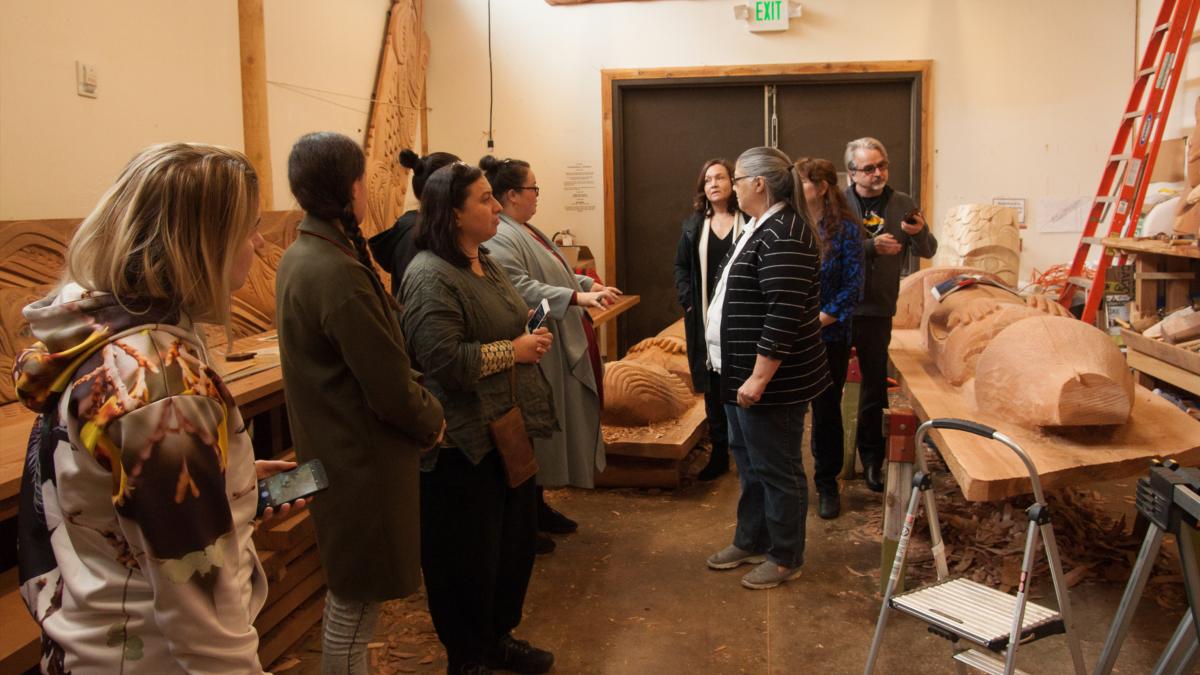

Ngā Aho site visits in 2017, with Daniel Glenn (Apsaalooke-Crow), AIA, Principal of 7 Directions Architects/ Planners, a Native-owned firm in Seattle, Washington, specializing in culturally responsive architecture and planning for diverse cultures and Indigenous communities.
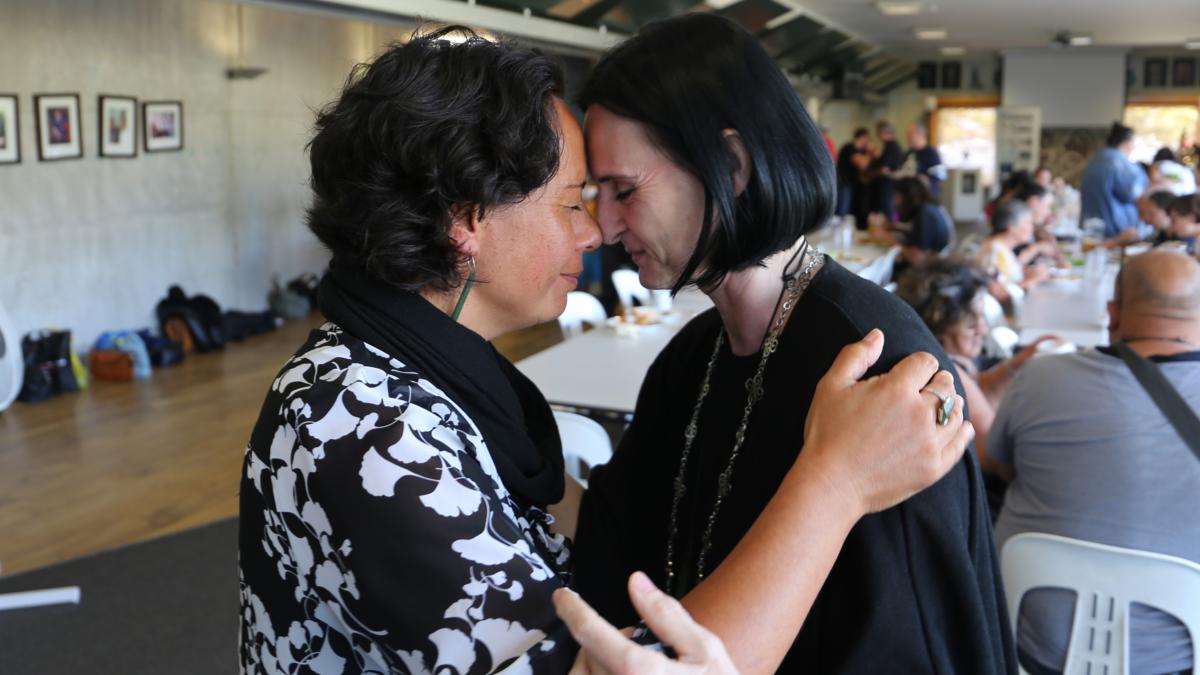
Hongi / Māori greeting shared between Keri Whaitiri (Ngā Aho Pae Matua) and Idoia Arana-Beobide (wife of Douglas Cardinal), Ngā Aho International Indigenous Design Forum, NZ, 2018.
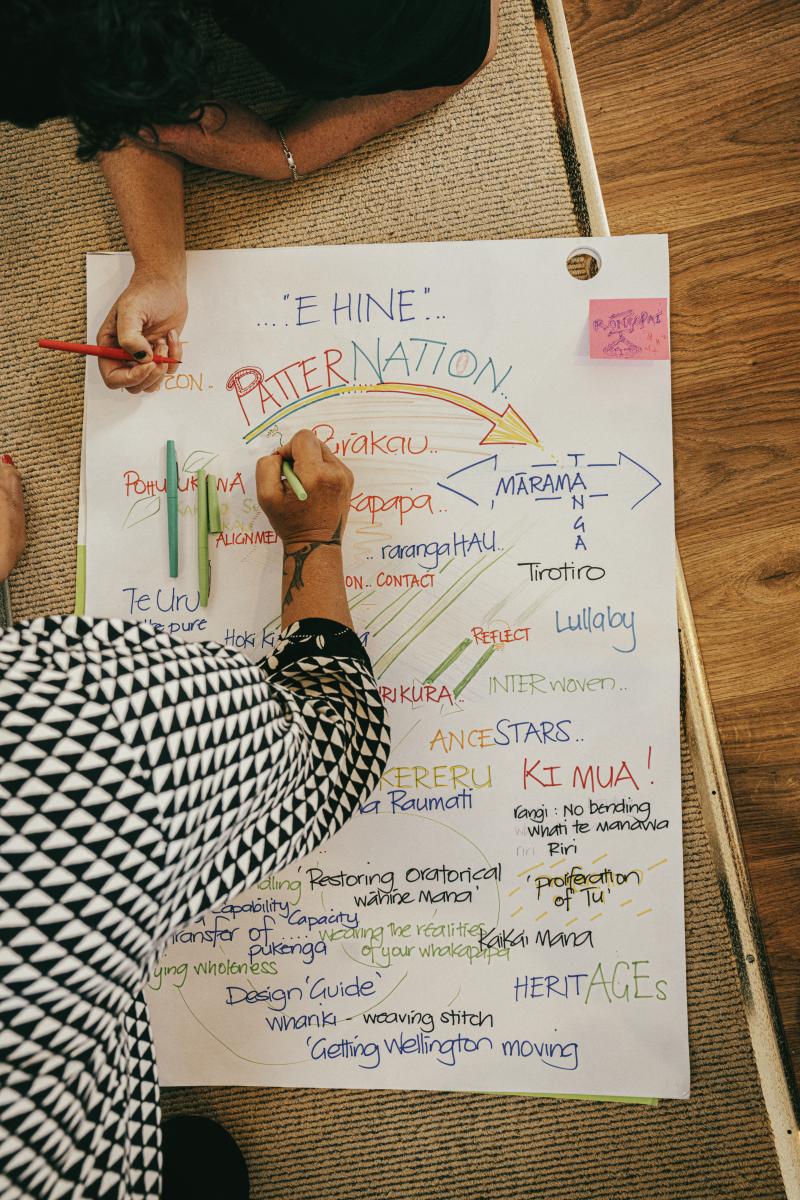
In 2018, at Nā te Kore, the International Indigenous Design Conference, the challenge was put forward to host a women-specific gathering to nurture a stronger balance in our design worlds. The gathering explored ways to support drawing upon mātauranga Māori (Māori knowledge systems) to guide a rich, deep, philosophical and particular-to-design-and-architecture practice for Aotearoa NZ.
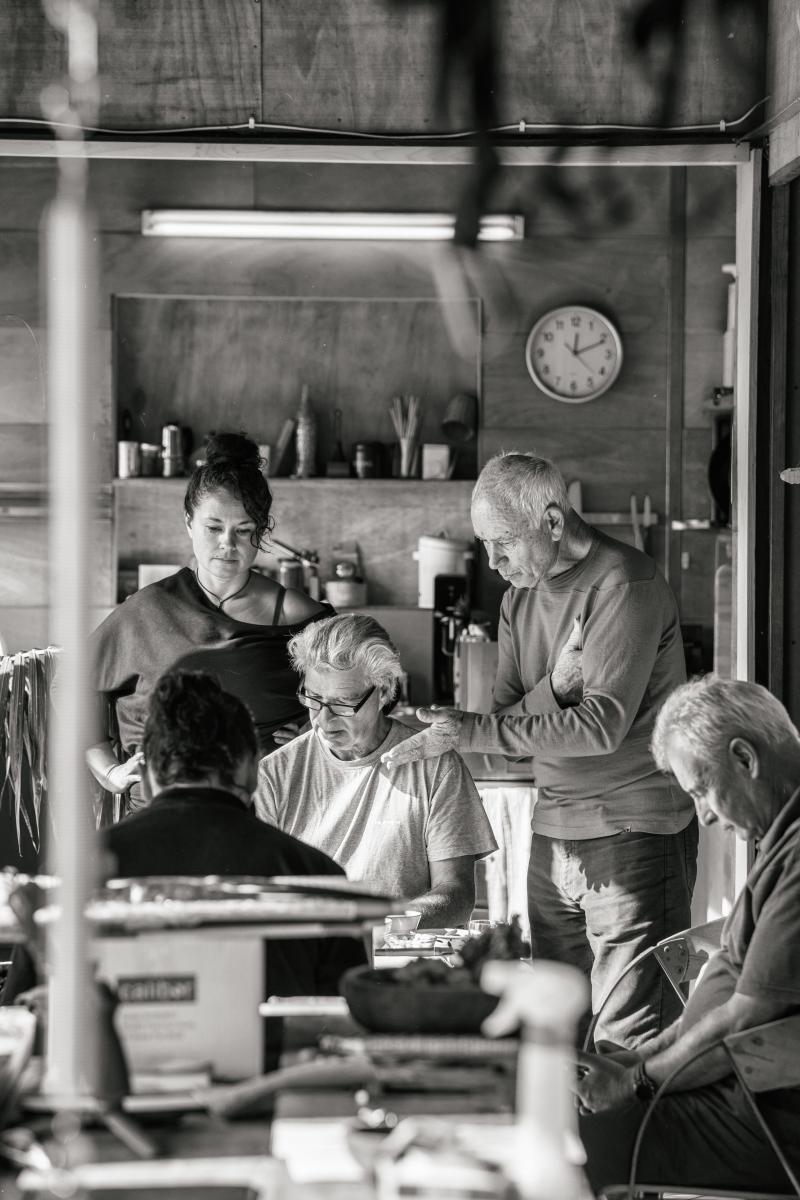
Ngā Aho Kāhui Whetū - Carin Wilson, Jacob Scott and Ross Hemera; Ngā Aho Pae Matua - Terri Crawford and Desna Whaanga Schollum; Kāhui Whetū wānanga, Pukeruru, NZ 2022.
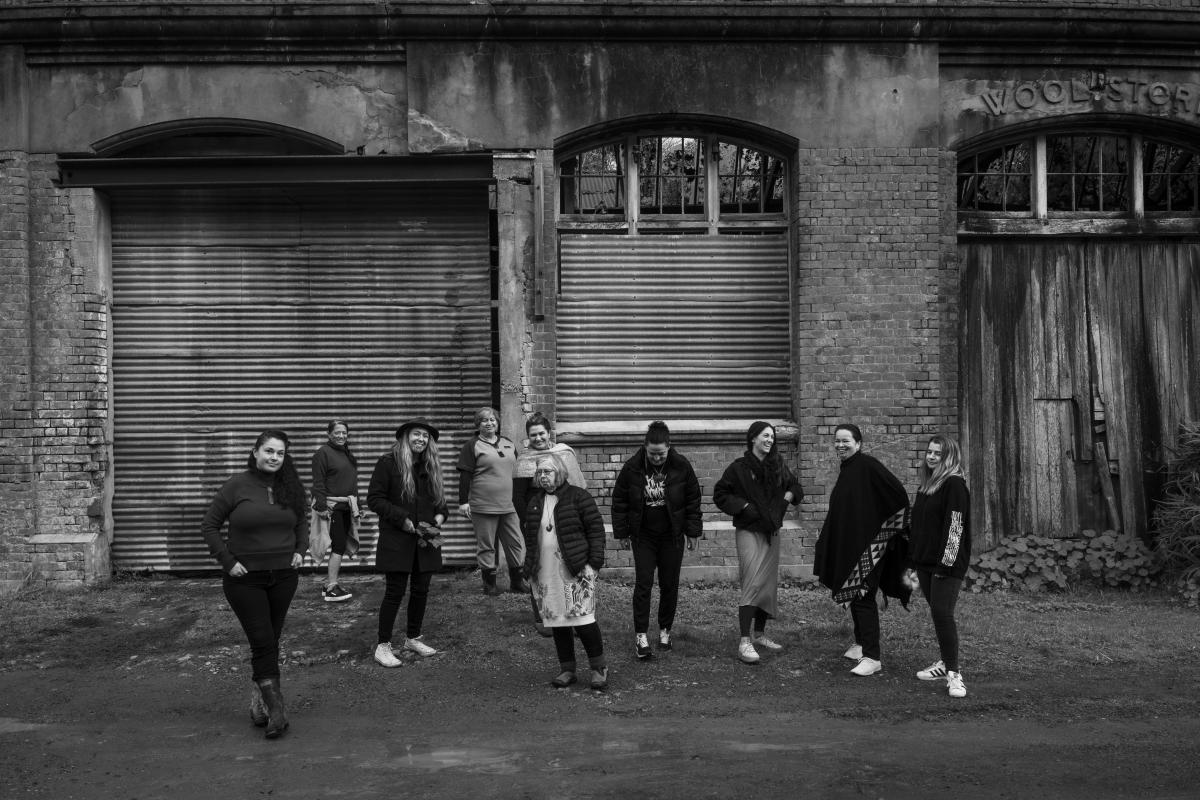
Ngā Aho, wahine matariki wānanga, 2022 (women designer’s gathering on Matriarchal territories).